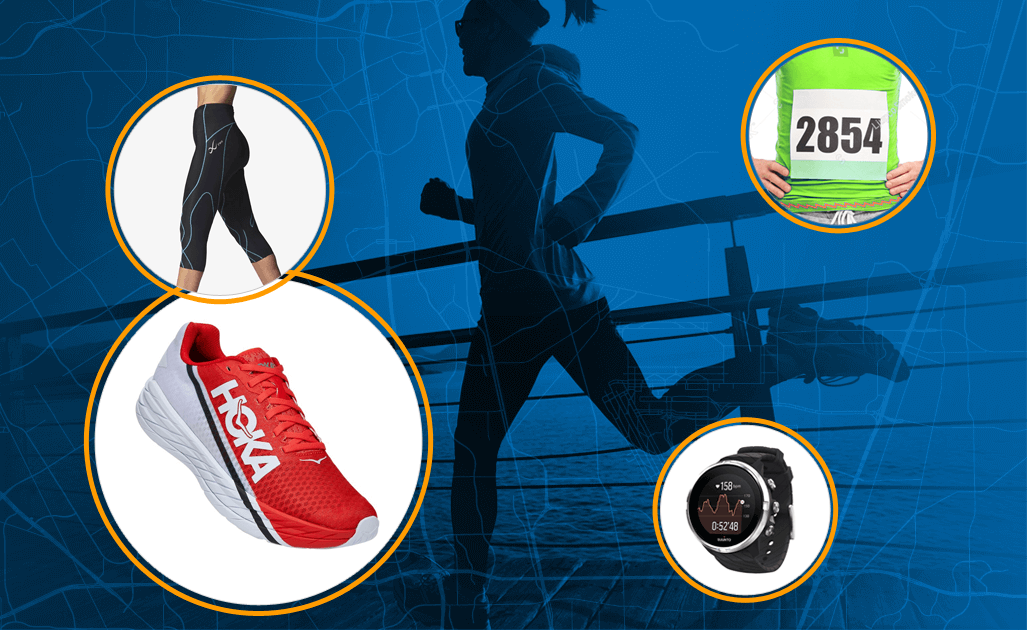"Running doesn't have to be complicated."
That's what the founders of Altra running shoes had in mind when they launched their first shoe designed for a natural running experience.
The simplicity of running is part of what makes this sport so compelling.
It doesn’t necessarily take more than a pair of shoes and a large dose of enthusiasm to infuse the day with all the positive energy of a run well done.
Just get up, lace up, speed up, and you’ve got yourself an outlet for empowerment.
The right running shoe should build on that simplicity, not make it more complicated.
Outside factors can sometimes shift the focus from the runner to the gear.
Altra believes that the body ultimately knows best.
That’s why this brand built an entire business around producing shoes that don’t feel like shoes as we know them.
Altra puts their money on the earnest person wearing the shoes, and designs shoes that simply elevate innate ability.
“We’re always trying to bring out natural human movement. Instead of trying to augment the human form, we’re trying to accent it.”
—Steven Shorten, Senior Designer for Altra Running Shoes
Altra has developed three core tactics to support their mission to create the perfect running experience:
✅ Every Altra shoe features a wide toe box at the forefront, which gives your toes room to splay naturally.
❌ Narrow shoes tend to constrict the toes and keep them from spreading apart. This can negatively affect your balance by preventing each of your toes from taking on their fair share of the body’s weight as you move through your stride.
✅ Freeing up more room for your toes translates to a better distribution of weight across your feet, and keeps the rest of your leg properly aligned as well.
✅It also allows your big toe to stay straight so that it can fully push off the ground. Most of the foot’s strength originates in the big toe, and it’s responsible for generating much of the force that powers your stride. Without enough space, plenty of that potential strength goes to waste.
When you stand barefoot, your heel and your forefoot are at the same level.
❌ Most traditional running shoes add stack height to the heel, raising up the back of the foot so that it sits higher than the front. Added height in the heel can promote overstriding by disguising impact on the heel.
✅ Altra eliminates that extra height, which encourages runners to shorten their step and reduce their impact on the ground. Keeping the foot even also improves posture in the hips and back, and engages lower-leg muscles for a stronger stride.
As physiologist Dr. Stacy Sims says, “Women are not just small men”.
✅Altra understands that women move differently than their male counterparts, because they possess different anatomical features.
The women’s line addresses things unique to female feet like:
The end goal at Altra is to bring the running game back to basics by putting runners at the forefront. The shoes then serve as a tool for bringing out the best in everything the human body has to offer on its own.
The story behind the shoes, however, is anything but basic.
The Product Line Manager
The Product Designer
“We start sketching and rendering options from different views. Then we’ll meet for a few design reviews where the whole team will get together and tear it all apart. We work together to mix and match from those options and eventually distill it all down into one design that we all like.”
—Steven Shorten, Senior Designer for Altra Running Shoes
But some designs take longer than others to reach a consensus. For example...
“I remember with one model of the Lone Peak, we went through that whole process and the right result just hadn’t arrived by the end,” says Shorten with a wince.
“I pulled some all-nighters, the whole upper got redesigned in a matter of days... We really try to keep the process fluid and consistent, but sometimes that doesn’t work.”
The Product Developer
Hiccups and all, the team eventually passes off a finalized design to the factories via the Product Developer.
They’ll take the designs and communicate with the producers to bring each shoe into being.
“This part requires a ton of faith in the process,” Shorten discloses. “You’re making something that’s never been made before."
"The first shoe attempt can sometimes look very rough, but that’s just the next starting point for the next sample. You just have to play the long game.”
With that in mind, let’s take a peek behind the scenes of Altra, and explore some of their most popular and innovative products from the perspective of Senior Designer Steven Shorten.
Steven: We all run differently. Altra footwear can very easily adapt to different running styles, footshapes, and gaits.
You can still run very naturally in our footwear, and we don’t push you in a certain way that your body doesn’t naturally want to go.
Even your two legs might move differently from one another.
Having a product that adapts to you instead of the other way around means being able to accept as many different types of movement styles as possible.
We want to be inclusive of different anatomies and geometries.
Steven: Personally, I love the Timp on trails and the Torin on the roads. I like the moderate cushion compared to lower cushion options like the Lone Peak.
I’d consider myself more of a fast hiker than a runner. I ran in high school but as a supplement to swimming. And once I got into college, I had a bad back injury which slowed down my running.
With hiking, I’m still able to get that VO2 max and heart rate going up the hills but without the same impact.
From a design point of view, I think that the Olympus 4 has really arrived.
If you prefer more cushion or you’re a bigger person looking for a high stack option, this one has come a long way.
Steven: I think the Lone Peak 4.5 was my favorite. It was pretty well accepted by the public and featured such a good mix of the classic stitch-down panel look and a performance product.
I also had a soft spot for the King MT 2, which was a very aggressive trail runner with unique innovations that I think honestly scared some people on the market.
Steven: The Lone Peak is definitely one of our better selling shoes. It’s in a unique area where it can work just as well as a trail runner as a hiker. It’s a very versatile shoe, a very low-cushion, no-frills shoe that athletes will do everything in from run 100 miles to hiking to the entire Appalachian Trail.
The Timp is also a favorite, it’s between the Lone Peak and the Olympus in terms of cushion. The extra thickness is perfect for a little higher impact.
The Escalante is also quite popular among road runners and walkers, it’s on the thinner side like the Lone Peak and great for daily wear. The newest version of that just came out, the Escalante 5, I think that one’s going to be a really nice one.
Steven: The brand new Vanish Carbon has taken a ton of work and innovation. It’s our version of the carbon racing shoe, it’s doing very well on the market so far.
We released it two to three seasons later than other brands. That’s because we had to figure out how to release a shoe that can compete as a strong racer but is still uniquely Altra.
The Vanish Carbon is different from other carbon racers, because:
The carbon-fiber running shoe misunderstanding...
There’s a fundamental misunderstanding out there about how a lot of these super shoes work.
Ultimately every runner is different, so one runner could run in these very well and another could run in the same shoe and it wouldn’t work at all.
But we’re finding that quite a broad group of people can hop in a Vanish Carbon and have a really good race.
The Mont Blanc Trail Super Shoe
The new Mont Blanc explores a new category: the trail super shoe.
Steven: We’re known so much as a trail brand, but Altra’s principles travel really well across trail and road.
We’ve got some very exciting products coming out on the road side of things especially… both new releases and some nice updates.
I feel like we’re just making our way into the road running scene, because we’ve taken such a function-first approach to our product.
The process gives us a unique aesthetic that’s very accepted on the trail since trail runners see shoes more as equipment, when on the road it’s almost an accessory… so our road products need to be dialed in on the style and aesthetic without losing our Altra touch.

Login to your account to leave a comment.





We Want to Give it to You!
